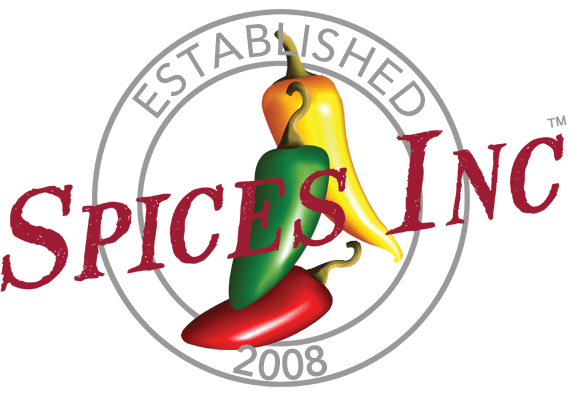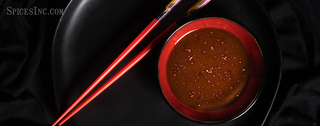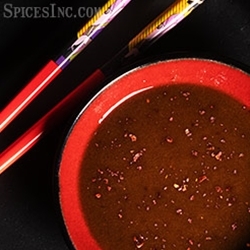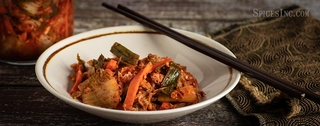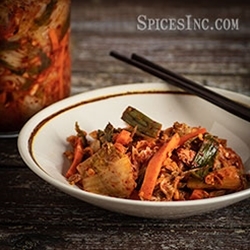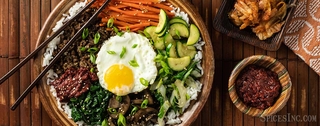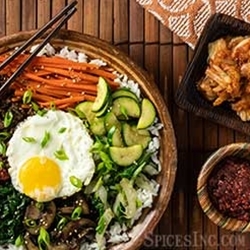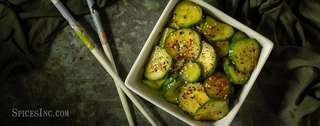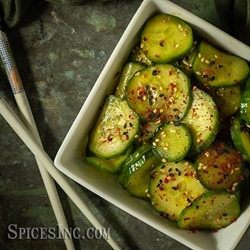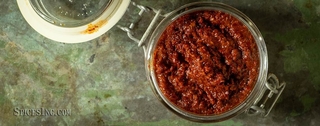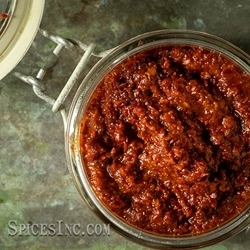Korean Chili Flakes
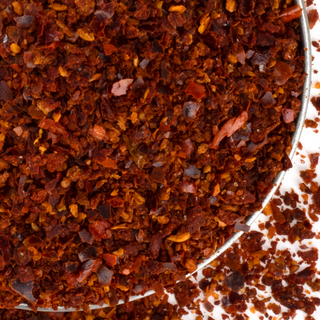



Korean Chili Flakes
Korean Chili Flakes, a member of the Capsicum annuum family, measure 4,000-8,000 Scoville Heat Units (SHU). They are the sweet and spicy flakes that give Korean food its desirable, perky heat. They are also called Korean red pepper flakes, Korean chilli flakes, gochugaru (go-chu-GA-ru) flakes, gochugaru bulk, Korean red pepper flakes, or Korean pepper flakes.
Korean food’s popularity around the world has steadily grown since 2010; the number of Korean restaurants not found in Korea leapt from 9,253 to 33,499 just 8 years later. The rise in the interest in Korean food is often associated with the trendsetting nature of Korean pop culture, as Korean bands and TV shows grow their global fan bases.
Korean Chili Flakes are often sought after by chili oil, sauce, and nut manufacturers; olive oil and spice shops; seasoning companies; brewpubs; pizza shops; Asian and Asian fusion restaurants; and breweries.
Flavor Profile
Korean Chili Flakes are sweet, fruity, and somewhat spicy.
Heat Level
Korean Chili Flakes are a medium-heat chile, measuring 4,000 – 8,000 Scoville Heat Units (SHU).
How To Use
Korean Chili Flakes are a crucial ingredient in Korean cuisine, particularly in the well-known and well-loved side dish, Kimchi. Kimchi gets much of its color and its flavor from these chile flakes. Use our Korean Chili Flakes to make Kecap Manis, a sweet and spicy ancestor to American ketchup. spicy Gochujang Paste, which you can then use as a base to mix into sauces for steak or tacos, blend into Korean Cucumber Salad, or toss on Korean Chicken Wings. One of our favorite recipes using Korean Chile Flakes is Bibimbap. These flakes are a great addition wherever you would like to add a bit of spice. While they are able to withstand a long cooking time, they shine when added near the end of cooking so their full heat and flavor can bloom. Try them sprinkled on an omelet or over scrambled eggs. Mix them in with rice. Toss over pasta; their fruity depth would be great in hearty pasta like orecchiette with sausage and broccoli rabe.
Korean Chili Flakes pair well with rice, chicken, fish, ginger, garlic, chives, fish sauce, pork, anise, fruit, celery, and chocolate.
| Ingredients | Korean Red Pepper |
| Also Called | Korean red pepper flakes, Gochugaru flakes, or pepper flakes |
| Recommended Uses | Used in kimchi, gochujang paste, eggs, ramen, rice, or pasta |
| Flavor Profile | Sweet, fruity, and somewhat spicy |
| Scoville Heat Units | 4,000-8,000 |
| Botanical Name | Capsicum annuum |
| Cuisine | Korean |
| How To Store | Airtight container in a cool, dark place |
| Shelf Life | 6-12 months |
| Country of Origin | China |
Nutrition Facts
Serving Size1 tsp
Amount Per Serving
Calories7
% Daily Value*
Total Fat0g0%
Saturated Fat0g0%
Trans Fat0g
Polyunsaturated Fat0g
Monounsaturated Fat0g
Cholesterol0mg0%
Sodium2.1mg0%
Total Carbohydrate1.6g1%
Dietary Fiber0.7g3%
Total Sugars0.0g
Added Sugars0g0%
Sugar Alcohol0.0g
Protein0.3g0%
Vitamin D0mcg0%
Calcium1mg0%
Iron0mg1%
Potassium44mg1%
*The % Daily Value (DV) tells you how much a nutrient in a serving of food contributes to a daily diet. 2,000 calories a day is used for general nutrition advice. These values were calculated and therefore are approximate. For more accuracy, testing is advised.
